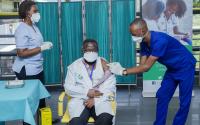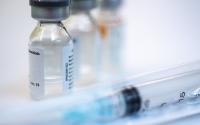[ad_1]
The number of people in the world vaccinated against COVID-19 has now eclipsed the number of people sickened by the virus, a remarkable achievement, but much of the progress is in just 10 countries, the head of the World Health Organization (WHO) said today.
Table of Contents
Uneven vaccine rollout, untapped potential
At a WHO briefing today, Director-General Tedros Adhanom Ghebreyesus, PhD, said three fourths of the doses that have been given so far are in just 10 countries. He said some countries have already vaccinated large proportions of their populations who are at lower risk of severe disease or death.
Though Tedros said he understands that governments feel an obligation to protect their own people, the best way to protect the whole world is to protect health workers and those at greatest risk in all countries. “In other words, unless we suppress the virus everywhere, we could end up back at square one,” he said. “We need countries to share doses once they have finished vaccinating health workers and older people.”
Tedros also said pharmaceutical companies can help with massive production scale-ups, and he lauded Sanofi’s recent announcement that it would make its manufacturing capacity available to boost production of the Pfizer-BioNTech vaccine. “We call on other companies to follow this example.”
Other steps could include issuing nonexclusive licenses that allow producers in other countries to make their vaccines and expand manufacturing, especially Africa, Asia, and Latin America.
While praising companies that are selling vaccine at cost, he urged them to do more, including sharing vaccine dossiers more quickly and fully with the WHO so that its advisors can evaluate them for emergency listing, a step that eases the rollout of vaccines to lower income countries.
So far, the WHO has listed just one vaccine, the one from Pfizer-BioNTech. Mariangela Simao, MD, MSc, the WHO’s assistant director-general for access to medicines and health products, said four vaccines are in advanced WHO evaluation stages: two from China and the AstraZeneca-Oxford vaccine made in two different facilities, one at India’s Serum Institute and the other at SK Bioscience in South Korea. She said she expects an announcement regarding the AstraZeneca-Oxford vaccines by Feb 15.
Virus still has a lot of energy, despite declining cases
WHO officials said a combination of factors is probably responsible for a global drop in cases, which has been sustained for 3 weeks now. Though vaccination could be playing some role, they said most of the credit goes to countries that have taken tough public health actions to reduce the spread of the virus.
Tedros singled out India as an example, noting that the country in September was averaging about 646,000 cases a week, but by late January, it had brought the number down to about 91,000 cases a week.
Mike Ryan, MD, who leads the WHO’s health emergencies program, said the world may be turning a corner. “But the problem with corners is you don’t see what’s around the corner,” he said.
Ryan emphasized that the virus won’t go away by itself. “We need to follow through,” he said, urging countries to continue taking strong public health measures to bring down their numbers. “The vaccine will help with that.”
Vaccine safety, efficacy against B117
Researchers from Oxford University reported yesterday in a preprint study that the AstraZeneca-Oxford vaccine is highly effective against the B117 variant. They based their findings on weekly upper-airway swabs among people who participated in phase 2/3 efficacy studies in the United Kingdom from Oct 1 to Jan 14. They also examined neutralizing antibody responses.
Vaccine efficacy was similar against the B117 variant and the standard virus, with 74.6% efficacy against the variant and 84% efficacy against the nonvariant virus.
In another vaccine development, UK government scientists today issued their first safety report on the AstraZeneca-Oxford and Pfizer-BioNTech vaccines. They say both vaccines meet safety standards and note that most side effects are mild and of short duration. The report is based on data to Jan 24, covering 5.4 million first doses of the Pfizer-BioNTech vaccine, 1.5 million doses of the AstraZeneca-Oxford vaccine, and .5 million second doses of the Pfizer-BioNTech vaccine.
Severe allergic reactions to the Pfizer-BioNTech vaccine were rare, with a rate of 1 or 2 in 100,000 doses.
In other global headlines:
- Perth, Australia, has ended its 5-day lockdown, with no new cases detected following the illness of a quarantined hotel worker, which marked the city’s first infection in about 10 months, according to Reuters.
- A nationwide seroprevalence study in India by the Indian Council of Medical research revealed that one in five Indians have been exposed to SARS-CoV-2, according to the Washington Post. Levels were higher in those living in urban slums and among healthcare workers. At a briefing yesterday, researchers pointed out that the majority of India’s 1.3 billion population is still susceptible to the virus.
- The global COVID-19 total recently topped 105 million and is now at 105,180,206 cases with 2,292,029 deaths, according to the Johns Hopkins online dashboard.
[ad_2]












